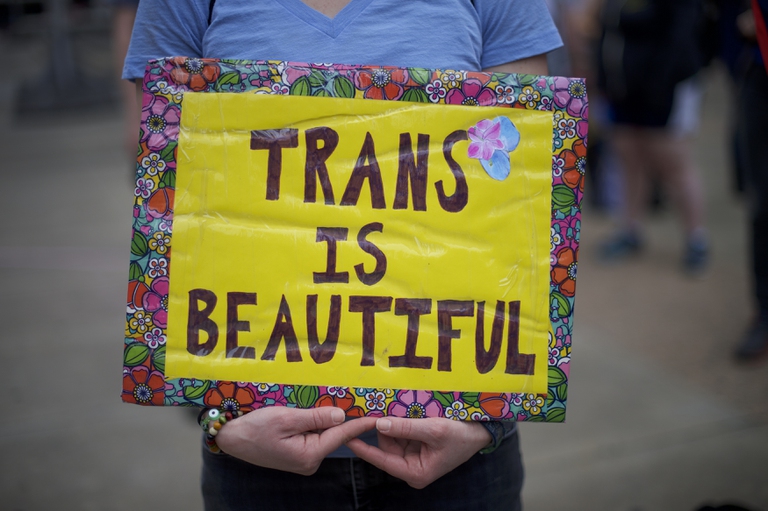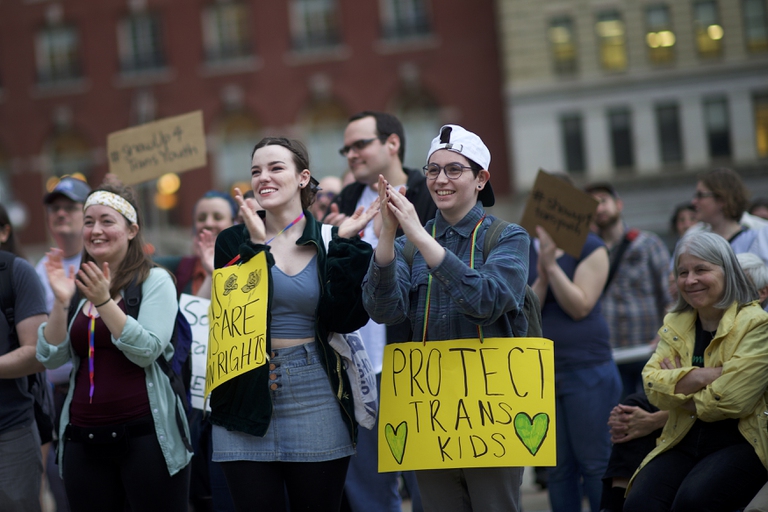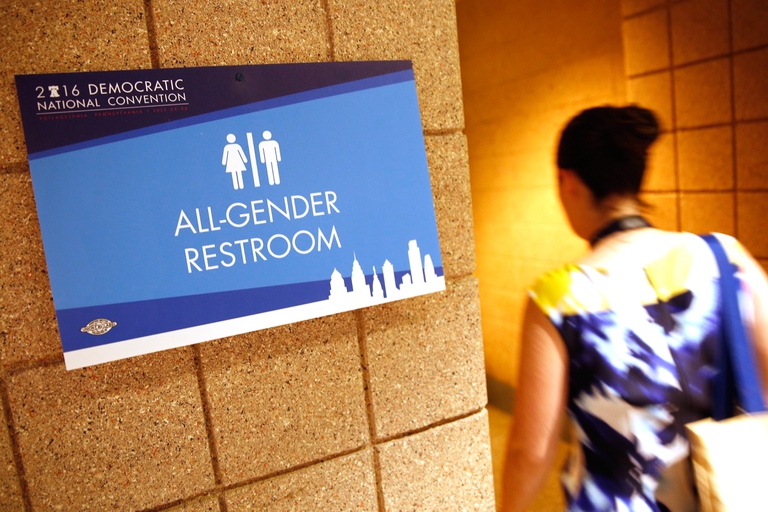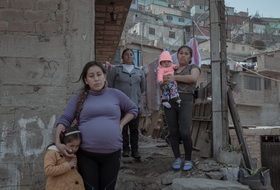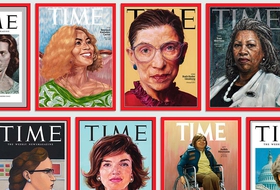
One in three women have suffered physical or sexual violence. With contributions from Europe, Africa, Asia and Latin America, we look at how this shadow pandemic affects every corner of the world.
In a one-sentence order the Supreme Court announced that it wouldn’t hear the case of a 17-year old Gavin Grimm that could have affected the interpretation of a non-discrimination law. “In light of the guidance document issued by the Department of Education and Department of Justice,” the Court decided to send the case back to the Court
In a one-sentence order the Supreme Court announced that it wouldn’t hear the case of a 17-year old Gavin Grimm that could have affected the interpretation of a non-discrimination law. “In light of the guidance document issued by the Department of Education and Department of Justice,” the Court decided to send the case back to the Court of Appeal.
The statement refers to the two-page letter published on the 22nd of February that withdrew the landmark Obama-era initiative prohibiting any education institution that receives federal funding from discriminating on the basis of sex. In this way, the letter revoked guidelines for public schools to protect the rights of transgender students to use school facilities matching their gender identity.
In the letter it is argued that such provisions hadn’t been preceded by a comprehensive legal analysis or public vetting process and that their ambiguous language led to a number of legal disputes. To justify this position, the officials behind the letter refer to two judicial decisions in which the Supreme Court highlighted the problematic nature of the term “sex”.
The letter “does not leave students without protections from discrimination, bullying, or harassment”, according to the Trump administration. Its publication arrives one month before the Supreme Court’s hearing on the high profile case of 17-year old transgender student Gavin Grimm, whose battle to access boys’ restrooms has sparked off the debate on transgender equality in the US.
The decision has received attention from both liberal and conservative advocacy groups. “We applaud the Trump administration,” said Mathew Staver from Liberty Counsel, an anti-LGBT hate group. “The Obama directive is a lawless act and defies common sense. Allowing boys to use private facilities for girls violates the right to privacy and places girls at risk of sexual abuse,” he added.
“This is a mean-spirited attack on hundreds of thousands of students who simply want to be their true selves and be treated with dignity while attending school,” contended Mara Keisling, Executive Director of the National Center for Transgender Equality in a statement. “With a pen stroke, the Trump administration effectively sanctions the bullying, ostracising and isolation of these children, putting their very lives in danger,” she continued.
The statue in question, Title IX, is a federal law enacted in 1972 and revised by the Office for Civil Rights (OCR) in April 2015. The law – which extends the protection from discrimination on the basis of sex not only to students but also employees, parents and guardians – focuses on guaranteeing equal opportunities in all education activities and nondiscriminatory access to school facilities. Contrary to common perception, it applies to a wide array of issues including sports activities, housing accommodation, joining social fraternities and sororities. Under Title IX, schools are allowed to introduce sex-segregated policies: however, they must also ensure that in doing so they don’t restrict any student in participating in school life consistent with their gender identity.
The Obama administration’s interpretation of the law was presented in a joint letter from the Education and Justice Departments made available to the public in May 2016. “Schools have a responsibility to provide a safe and nondiscriminatory environment for all students, including transgender students,” instruct its authors. “Harassment that targets a student based on gender identity, transgender status, or gender transition is harassment based on sex”, they emphasise.
Read more: LGBT rights in Latin America, caught between progressive laws and widespread homophobia
This contentious issue could have been resolved by the Supreme Court in Gavin Grimm’s case scheduled for a preliminary hearing in March. “When it decided to hear Gavin Grimm’s case, the Supreme Court said it would decide which interpretation of Title IX is correct, without taking any administration’s guidance into consideration,” reassured Joshua Block, leading counsel for Grimm, before the Court’s new order.
The 17-year old student at Gloucester High School in Virginia has been diagnosed with gender dysphoria, a medical condition caused by incongruence between one’s gender identity and sex identified at birth. In August 2014, Gavin and his mother informed the school authorities that he would attend the school as boy. He initially used the nurse’s restroom at school but soon after he felt the experience was stigmatising and requested permission to use boy’s restroom. Although there were no incidents for almost two months since he began to use the boy’s facilities, some parents requested a change of school policy, asking for the designation of a separate unisex restroom.
“All I want to do is be a normal child and use the restroom in peace and I have had no problems from students to do that — only from adults,” said Grimm. “I’m just a human. I’m just a boy,” he states in the speech during which he explained that separating him from other students has been “alienating and humiliating”. The lawsuit argues that singling him out constitutes sex discrimination and therefore violates the Fourteenth Amendment of the US Constitution, which addresses equal protection under the law, and Title IX.
Read more: Being LGBT in Indonesia, why attacks on the community are growing
The case of this 17-year old boy from Virginia who inadvertently became an ambassador for all transgender students in the US came at a much-needed time for the civil rights movement. Despite Trump’s earlier assurances that he would support LGBT rights, once again civil society advocates find themselves on the defensive. The Supreme Court’s voice could have reshaped the future of the civil rights movement, which is why its surprising decision to vacate the appeal is a major setback and a sign that there is much more to be done on the path to equal rights for all Americans.
Siamo anche su WhatsApp. Segui il canale ufficiale LifeGate per restare aggiornata, aggiornato sulle ultime notizie e sulle nostre attività.
![]()
Quest'opera è distribuita con Licenza Creative Commons Attribuzione - Non commerciale - Non opere derivate 4.0 Internazionale.
One in three women have suffered physical or sexual violence. With contributions from Europe, Africa, Asia and Latin America, we look at how this shadow pandemic affects every corner of the world.
The Istanbul Convention against gender-based and domestic violence marks its tenth anniversary. We look at what it is, who its signatories are, and what the future might hold.
European Commission President Ursula von der Leyen reminded us of the gravity of violence against women around the world, and of the Istanbul Convention’s utmost importance.
President Erdoğan has pulled Turkey out of the Istanbul Convention, key in the fight against gender violence, claiming that it favours the LGBT community rather than family values.
Violence against women in Peru has increased as a result of Covid-19 lockdowns. 14,912 people were reported missing from January to November 2020, more than half of them minors and 64 per cent women. People have been confined to their homes for months, many forced to endure poor physical, economic and social conditions. A situation that
Joys Estefani Qqueccaño Huamani, 24, disappeared from her rural community in Peru on 9 October. Her family began looking for her independently of the authorities and despite the resistance of relatives of Joys Estefani’s ex-partner Arturo Ccana Condori, 32, charged with committing violence against her on 28 September, eleven days before Joys Estefani disappeared. Photos
Costa Rica celebrated its first same-sex marriage when two women, Alexandra Quiros and Dunia Araya, celebrated their wedding: an “extraordinary moment”.
The pandemic and its restrictions are affecting everyone, without exceptions. However factors like housing, income inequalities, gender, access to technology and working conditions are influencing how people experience the health crisis.
Time magazine’s 100 Women of the Year project sheds light on influential women’s stories, from Amelia Earhart to Greta Thunberg. A selection of some of the greats for International Women’s Day.
